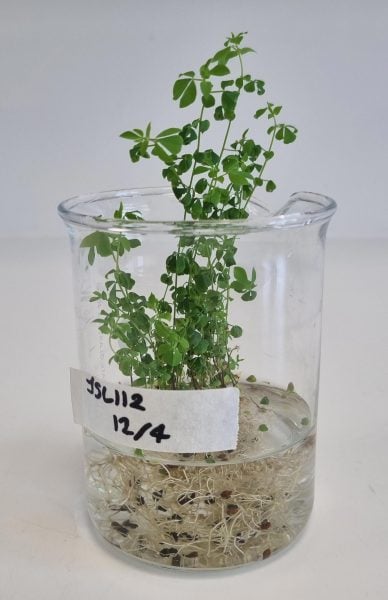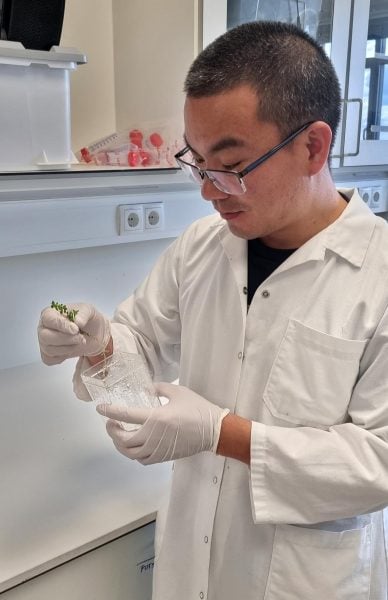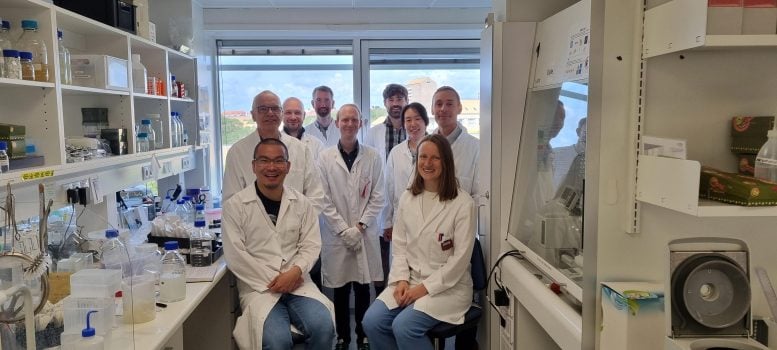How Zinc Could Change Farming Forever


A new study reveals zinc’s critical role in regulating nitrogen fixation in legumes through a sensor named FUN. This discovery could help improve crop efficiencies and reduce synthetic fertilizer use by adapting to environmental and soil conditions.
Researchers have found that zinc significantly influences the nitrogen fixation process in legumes, a discovery that could transform legume-based agriculture.
Climate change, drought, increased temperature, and other stressors challenge agricultural sustainability. Researchers have now made an unexpected discovery: zinc plays a pivotal role in the plant response to abiotic stress. This groundbreaking discovery not only sheds light on the intricate mechanisms of plant growth but also holds promise for revolutionizing crop resilience, especially in legume-based agriculture.
Discovery of Zinc’s Role in Nitrogen Fixation
Scientists have uncovered a vital role for zinc in the nitrogen fixation process of legumes. This discovery, paired with insights into the transcriptional regulator known as Fixation Under Nitrate (FUN), has the potential to transform legume farming by enhancing crop efficiency and decreasing the dependence on synthetic fertilizers. By delving into the mechanisms through which zinc and FUN control nitrogen fixation, researchers aim to boost nitrogen availability, improve crop yields, and foster more environmentally friendly farming methods.
Legume crops form a symbiotic relationship with rhizobia bacteria, which fix atmospheric nitrogen into root nodules. These nodules, however, are vulnerable to various environmental pressures such as changes in temperature, drought, flooding, soil salinity, and elevated soil nitrogen levels.
Breakthrough in Plant Micronutrient Sensing
Researchers from Aarhus University, in collaboration with Polytechnic University of Madrid and European Synchrotron Radiation Facility in France, have discovered that legumes use zinc as a secondary signal to integrate environmental factors and regulate nitrogen fixation efficiency. In the study published in Nature, the researchers discovered that FUN is a novel type of zinc sensor, which decodes zinc signals in nodules and regulates nitrogen fixation.
“It’s truly remarkable to discover zinc’s role as a secondary signal in plants. It is a vital micronutrient, and it has never been considered as a signal before. After screening over 150,000 plants, we finally identified the zinc sensor FUN, shedding light on this fascinating aspect of plant biology,” Assistant Professor Jieshun Lin, the study’s first author, explains.
Unveiling the Functionality of the FUN Protein
In this study the researcher identifies that FUN is an important transcription factor that control nodule breakdown when soil nitrogen concentrations are high: “FUN is regulated by a peculiar mechanism that monitor the cellular zinc levels directly and we show that FUN is inactivated by zinc into large filament structures and liberated into the active form when zinc levels are low,” Professor Kasper Røjkjær Andersen explains.
From an agricultural perspective, continued nitrogen fixation could be a beneficial trait that increases nitrogen availability, both for the legume and for co-cultivated or future crops that rely on the nitrogen left in the soil after legumes are grown. This helps lay the foundations for future research that provides new ways for us to manage our farming systems and reduce the use of nitrogen fertilizer and reduce its impact on the environment.
Enhancing Agricultural Efficiency and Sustainability
The implications of this research are significant. By understanding how zinc and FUN regulate nitrogen fixation, researchers are developing strategies to optimize this process in legume crops. This could lead to increased nitrogen delivery, improving crop yields and reducing the need for synthetic fertilizers, which have environmental and economic costs.
Researchers are now investigating the mechanisms of how zinc signals are generated and decoded by FUN. They are looking forward to applying these new discoveries to legume crops such as faba bean, soybean, and cowpea.
Reference: “Zinc mediates control of nitrogen fixation via transcription factor filamentation” by Jieshun Lin, Peter K. Bjørk, Marie V. Kolte, Emil Poulsen, Emil Dedic, Taner Drace, Stig U. Andersen, Marcin Nadzieja, Huijun Liu, Hiram Castillo-Michel, Viviana Escudero, Manuel González-Guerrero, Thomas Boesen, Jan Skov Pedersen, Jens Stougaard, Kasper R. Andersen and Dugald Reid, 26 June 2024, Nature.
DOI: 10.1038/s41586-024-07607-6
This work was supported by the project Enabling Nutrient Symbioses in Agriculture (ENSA), that is funded by Bill & Melinda Gates Agricultural Innovations (INV- 57461), the Bill & Melinda Gates Foundation and the Foreign, Commonwealth and Development Office (INV-55767), the Carlsberg Foundation grant (CF21-0139) and the European Research Council (ERC) under the European Union’s Horizon 2020 research and innovation program (grant agreement No. 834221).
Jieshun Lin, Peter K. Bjørk, Jens Stougaard, Kasper R. Andersen, and Dugald Reid are inventors on a filed patent that captures these discoveries.




